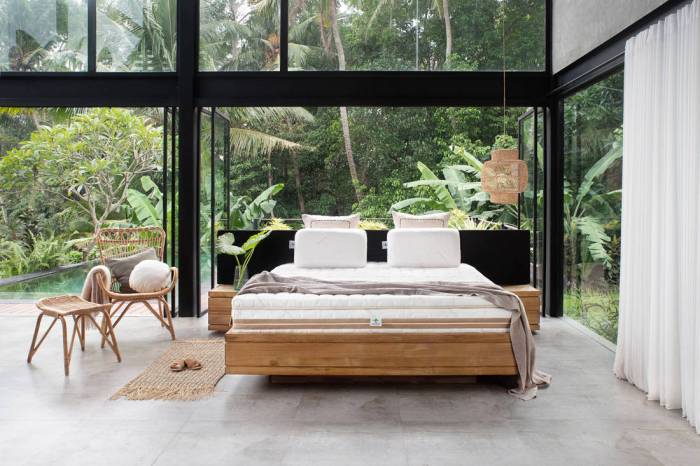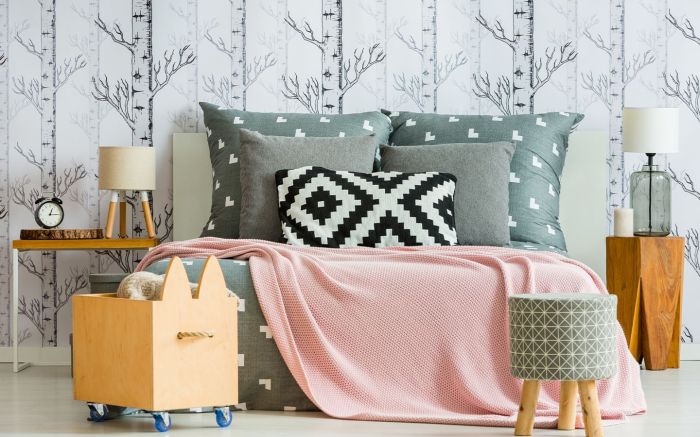In today’s environmentally conscious world, it’s more important than ever to make sustainable choices in all aspects of our lives, including the way we furnish our homes. When it comes to girls’ bedroom furniture, there are many eco-friendly and sustainable options available that are both stylish and good for the planet.
In this guide, we’ll explore the benefits of using eco-friendly and sustainable materials, discuss the importance of sustainable manufacturing practices, and provide tips on choosing furniture that will last for years to come. We’ll also take a look at some of the latest trends in eco-friendly girls’ bedroom furniture and provide tips on how to create a space that is both healthy and stylish.
Eco-Friendly Materials
When selecting furniture for your daughter’s bedroom, consider eco-friendly materials that promote sustainability and reduce environmental impact. These materials offer numerous advantages over traditional materials, ensuring a healthier living space for your child.
Sustainable materials like bamboo, reclaimed wood, and organic cotton are grown or harvested responsibly, minimizing the depletion of natural resources. They also require less energy and chemicals to process, reducing greenhouse gas emissions and pollution.
Bamboo
- Renewable and fast-growing, bamboo sequesters carbon dioxide from the atmosphere.
- Its durability and resistance to pests make it an excellent choice for furniture frames and headboards.
- Example: A bamboo platform bed with a natural finish and organic cotton bedding.
Reclaimed Wood
- Reusing wood from old structures reduces deforestation and preserves natural habitats.
- Reclaimed wood often has a unique character and patina, adding charm to your daughter’s room.
- Example: A reclaimed wood dresser with drawers featuring antique hardware.
Organic Cotton
- Organic cotton is grown without harmful pesticides or fertilizers, reducing chemical pollution.
- Its soft and breathable qualities make it ideal for bedding, curtains, and upholstery.
- Example: A cozy organic cotton comforter with a floral print and matching pillowcases.
Sustainable Manufacturing Practices
Eco-friendly furniture manufacturers prioritize sustainable practices throughout the production process. By minimizing waste, reducing carbon emissions, and utilizing renewable energy sources, they contribute to a greener planet.
Renewable Energy and Water Conservation
Sustainable manufacturers harness solar and wind power to reduce reliance on fossil fuels. They also implement water-saving techniques, such as rainwater harvesting and efficient irrigation systems, to minimize water consumption.
Certifications and Standards
Certifications like the Forest Stewardship Council (FSC) and GreenGuard ensure that manufacturers adhere to sustainable forestry practices and reduce harmful emissions. These standards guarantee that furniture meets strict environmental criteria, ensuring its eco-friendliness.
Durability and Longevity
Contrary to popular belief, eco-friendly furniture can be just as durable and long-lasting as traditional furniture. In fact, when high-quality materials and construction techniques are used, eco-friendly furniture can often outperform its traditional counterparts.
One of the keys to durability is using high-quality materials. Eco-friendly materials like bamboo, cork, and reclaimed wood are all known for their strength and durability. Bamboo, for example, is one of the strongest natural materials on earth, and it is also resistant to pests and rot.
In addition to using high-quality materials, it is also important to use sound construction techniques. Eco-friendly furniture should be well-made and assembled using sturdy joinery techniques. This will ensure that the furniture is able to withstand everyday use and last for many years to come.
Maintenance and Care
Proper maintenance and care can help to extend the lifespan of any furniture, including eco-friendly furniture. Here are a few tips for maintaining and caring for your eco-friendly furniture:
- Clean your furniture regularly with a soft, damp cloth.
- Avoid using harsh chemicals or cleaners on your furniture.
- Protect your furniture from direct sunlight and heat.
- If your furniture gets wet, dry it off immediately.
- Regularly inspect your furniture for any signs of damage or wear and tear.
Design and Aesthetics
Eco-friendly furniture is not only good for the environment but also visually appealing. It offers a wide range of styles, from traditional to modern, ensuring that there is something to suit every taste.
When compared to traditional furniture, eco-friendly furniture often features simpler designs with a focus on natural materials and clean lines. This minimalist approach creates a sense of tranquility and harmony in the room, making it a perfect choice for those who appreciate a calm and serene environment.
Range of Styles
Eco-friendly furniture is available in a wide range of styles, including:
- Traditional: Classic designs with intricate details and rich finishes.
- Modern: Clean lines, simple shapes, and a focus on functionality.
- Contemporary: A mix of traditional and modern styles, with an emphasis on comfort and style.
- Rustic: Natural materials, such as wood and stone, with a focus on simplicity and durability.
- Industrial: Metal and wood combined to create a raw and edgy look.
Stylish and Functional Pieces
Eco-friendly furniture can be both stylish and functional. Here are a few examples:
- A solid wood bed frame with a natural finish creates a warm and inviting atmosphere.
- A bamboo dresser with clean lines and ample storage space provides both style and functionality.
- A jute rug with a neutral color palette adds texture and warmth to the room.
- A reclaimed wood coffee table with a metal base combines rustic charm with industrial flair.
- A recycled plastic chair with a comfortable design is both durable and environmentally friendly.
Health and Well-being
Incorporating eco-friendly furniture into your girls’ bedroom offers numerous health benefits. These furnishings minimize exposure to potentially harmful chemicals, which can be found in conventional furniture made from synthetic materials. Eco-friendly furniture, crafted from natural and sustainable materials, helps create a healthier indoor environment for your children.
Hypoallergenic and Non-Toxic Materials
Hypoallergenic materials, such as organic cotton, bamboo, and natural wood, are ideal for eco-friendly furniture. These materials are less likely to trigger allergic reactions or skin irritation, ensuring a comfortable and healthy environment for your girls. Additionally, non-toxic finishes and paints, free from harmful chemicals like formaldehyde and VOCs (volatile organic compounds), safeguard your children’s respiratory health.
Final Summary
By choosing eco-friendly and sustainable girls’ bedroom furniture, you can create a space that is both healthy and stylish. You can also rest assured that you are making a positive impact on the environment. With so many great options available, there’s no reason not to make the switch to eco-friendly furniture today.



